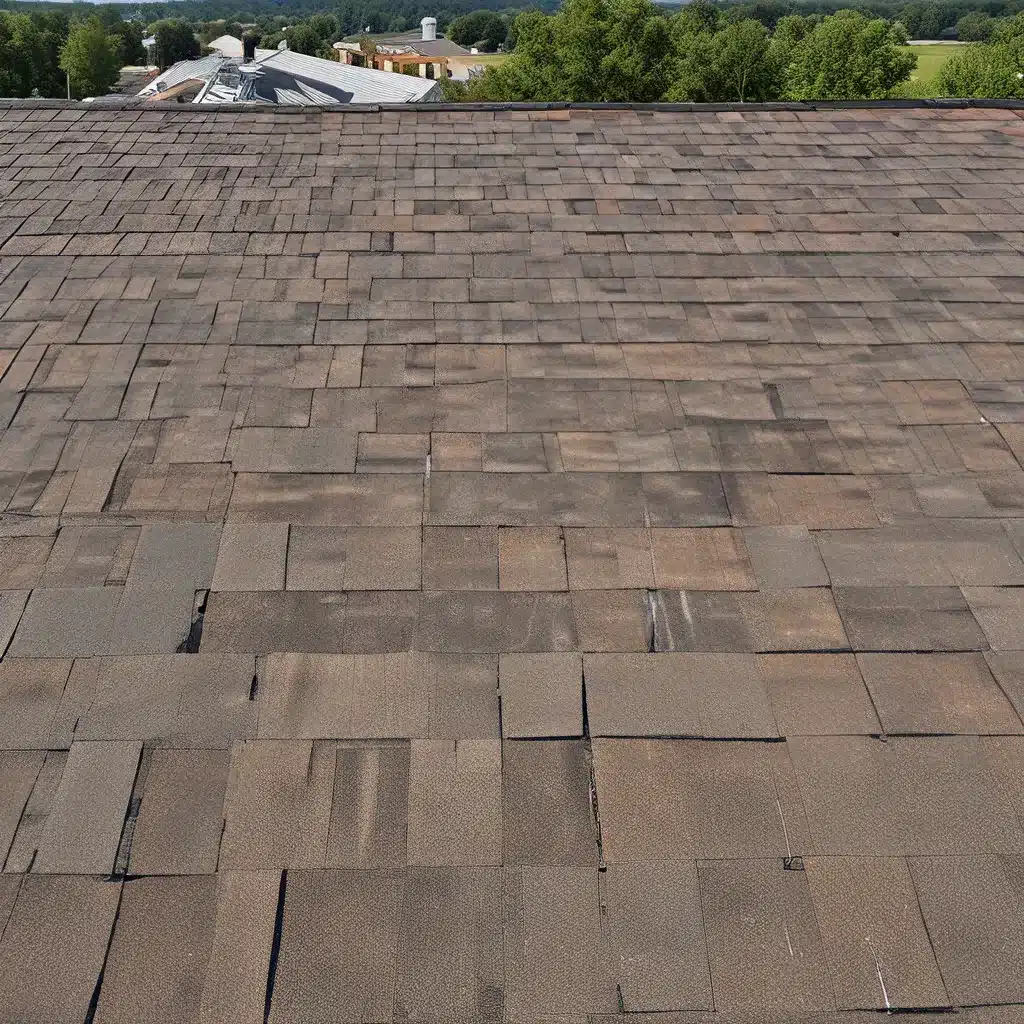
Ah, the age-old question that plagues us all – what’s the deal with roofs, anyway? Are they just these boring, functional structures that keep the rain and snow out, or is there more to them than meets the eye? Well, buckle up, my friends, because we’re about to embark on a wild ride through the world of sustainable roofing systems.
The Urban Farming Frontier
You know, with more and more people living in cities these days, it’s no wonder we’re starting to get creative with how we use our limited space. And one of the most exciting frontiers? Rooftop farming. That’s right, folks – we’re talking about growing food right on top of our buildings!
Now, I know what you’re thinking – “But wait, don’t roofs get hot and dry and generally not-so-great for growing things?” Well, my friend, that’s where the magic of rooftop agrivoltaics comes in. This nifty little concept involves integrating solar panels with rooftop farming, and the results are pretty darn impressive.
According to the experts, when you combine solar panels and rooftop farming, it’s a win-win situation. The plants help cool the solar panels, which in turn provide shade and protection for the crops. And the best part? This setup can actually boost the overall productivity of both the solar panels and the crops. It’s like a rooftop party, but for your food and energy needs!
Harnessing the Power of the Sun
Speaking of solar panels, let’s dive a little deeper into the potential of agrivoltaic systems. Did you know that the National Renewable Energy Laboratory estimates there’s over 12 million acres of rooftop space in the US that’s suitable for solar panel installations? That’s a whole lot of untapped potential, if you ask me.
Research has shown that if we could just tap into 5% of that rooftop space, it would create over 24,000 hectares (that’s over 60,000 acres!) of potential rooftop farms. Imagine the impact that could have on our urban food systems! It’s like a renewable energy and urban agriculture superhero team-up.
But it’s not just about the numbers – the benefits of these systems go beyond just food and power production. Rooftop agrivoltaics can also help moderate extreme weather conditions, which is becoming increasingly important as our climate continues to, well, do its thing. And let’s not forget the potential for added income for farmers who can take advantage of these multi-functional spaces.
Unlocking the Secrets of Soil and Sun
Now, I know what you’re thinking – “Okay, this all sounds great, but how do these systems actually work?” Well, my friends, it’s a delicate dance between the plants, the solar panels, and the good old-fashioned power of the sun.
Apparently, the plants help cool the solar panels through evaporative cooling, while the panels provide shade and protection for the crops from UV radiation and extreme temperatures. It’s like a symbiotic relationship, where everyone’s needs are being met.
But it’s not just about the surface-level interactions – the real magic happens underground. By tapping into the stable temperatures just a few feet below the earth’s surface, these systems can harness the power of geothermal energy to heat and cool the growing structures, reducing the need for energy-intensive climate control systems.
And let’s not forget about the soil itself. Certain soil types, like sandy loam, are ideal for these systems, providing the perfect balance of drainage and nutrient-richness for the crops. It’s like Mother Nature’s own little rooftop party, and we’re all invited.
The Future of Urban Farming
Now, I know what you’re thinking – “This all sounds great, but how practical is it, really?” Well, my friends, the future of urban farming is looking brighter than ever, thanks to the potential of sustainable roofing systems.
Roofing companies like Southern Roofing Co. are already exploring ways to integrate these technologies into their services, helping homeowners and business owners alike to maximize the potential of their rooftops.
And it’s not just about the roofs – the potential for these systems extends beyond the urban environment. Geothermal greenhouses and high tunnels are also getting in on the action, using the stable temperatures just below the earth’s surface to create more efficient and sustainable growing environments.
But it’s not all sunshine and rainbows, of course. There are still plenty of challenges to overcome, from the costs of installation to the complexities of integrating these systems into existing infrastructure. Sustainable products and materials will play a crucial role in making these systems more accessible and affordable for the average homeowner or business owner.
Still, the potential is undeniable. As we continue to grapple with the realities of climate change and the growing demand for sustainable food systems, rooftop agrivoltaics and other sustainable roofing technologies could be the key to unlocking a more resilient and self-sufficient urban future.
So, what do you say? Ready to join the rooftop farming revolution? It’s time to embrace the power of the sun and the secrets of the soil, and see what kind of magic we can create on top of our very own buildings. Let’s get growing, folks!